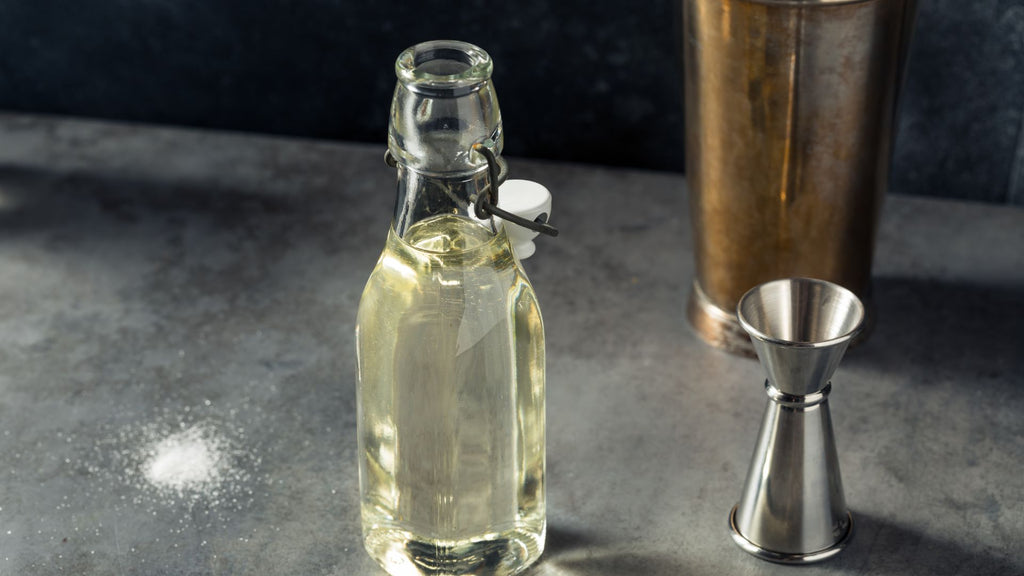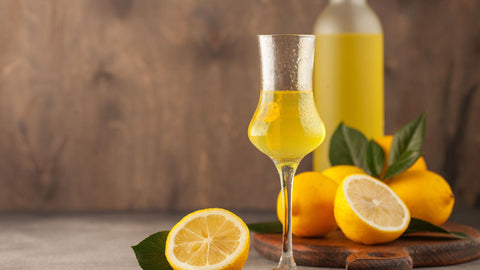Impress Your Guests with Homemade Limoncello: A Refreshing and Rewarding Experience

Everything You Need to Know About How to Make Limoncello
Imagine the delight on your guests' faces as you unveil a bottle of homemade limoncello, a vibrant citrus liqueur boasting a rich, golden hue. Not only will you be offering a taste of Italy, but you'll also be showcasing your culinary prowess and commitment to creating a memorable experience. Forget expensive store-bought options or crowded bars –– with a little planning and this comprehensive guide, you can craft exceptional limoncello in your own kitchen, perfect for after-dinner drinks or celebratory occasions.
What is Limoncello?
Limoncello (Limoncello in Italian, literally meaning "little lemon") is a traditional Italian lemon liqueur originating from Southern Italy, particularly Campania, Sorrento, and Sicily. This delightful digestif boasts a vibrant yellow color, a refreshingly sweet and lemony flavor, and an alcohol content ranging from 25% to 30% ABV (Alcohol by Volume).
How To Make Limoncello

Making limoncello at home is a surprisingly simple process, though patience is key. Here's a detailed breakdown of the steps involved:
Is It Safe?
Yes, homemade limoncello is safe to consume when prepared correctly. The high alcohol content inhibits bacterial growth, and the sugar syrup further contributes to preservation. Always discard any limoncello that develops an off odor or mold.
Ingredients:
- Lemons: High-quality lemons are essential for achieving the best flavor. Look for organic, unwaxed lemons with thick rinds (see "What Lemons to Use" below for more details).
- Alcohol: Traditionally, grain alcohol (around 190-proof) is used for limoncello. However, 100-proof vodka is a more readily available and legal alternative in many regions (see "What Alcohol to Use" below for a discussion on options and considerations).
- Water: Use filtered or bottled water for the simple syrup.
- Sugar: Granulated sugar is used to create a simple syrup that sweetens the limoncello.
Equipment:
- Vegetable peeler or zester: This removes the lemon zest without the bitter white pith.
- Large glass jar with a tight-fitting lid: A one-gallon jar is ideal for this recipe.
- Cheesecloth or fine-mesh strainer: Used for straining the infused alcohol.
- Funnel: Makes bottling easier.
- Coffee filters (optional): For an extra-smooth result.
- Glass bottles: Choose decorative bottles for gifting or attractive serving options.
Limoncello Recipe

This recipe yields approximately 750 ml (25 fl oz) of limoncello.
What Lemons to Use?
For the best limoncello, choose organic lemons whenever possible. This avoids any lingering pesticides or wax residue that can affect the flavor. Look for lemons with thick rinds and a vibrant yellow color. Meyer lemons can also be used, offering a slightly sweeter and orangey twist on the classic flavor profile.
Step Two: Wash Lemons
Wash the lemons thoroughly under warm running water. You can use a vegetable brush to remove any dirt or debris. This is especially important if you're not using organic lemons.
Step Three: Zest Lemons

Using a vegetable peeler or a zester, carefully remove only the yellow outer rind of the lemons. Avoid the white pith underneath, as it can impart bitterness to your limoncello. Aim for around 50 grams (1.75 ounces) of zest.
What Alcohol to Use?
Traditionally, grain alcohol is used for limoncello. However, in many regions, grain alcohol is heavily regulated or unavailable for purchase by the general public. A readily available substitute is 100-proof vodka. Important Note: Always check your local regulations regarding the use of grain alcohol before using it in any recipe.
Step Four: Filter the Liquor (Optional)
This step is optional, but it can help ensure a crystal-clear limoncello. If you're using grain alcohol, you can filter it using a Brita filter or a similar water filtration system to remove any impurities.
Step Five: Add Zest to Liquor
Combine the lemon zest and your chosen alcohol (grain alcohol or vodka) in the clean, one-gallon glass jar. Secure the lid tightly, and for extra precaution, wrap plastic wrap around the lid to prevent any leakage. Label the jar with the date and any specific details about your batch (e.g., type of alcohol used).
Step Six: Let the Infusion Rest
Store the jar in a cool, dark place and allow the mixture to infuse for at least one week. Shake the jar occasionally during the first week to help distribute the
lemon oils. Here, patience is truly rewarded – longer infusion times can lead to a more intensely flavored limoncello. Some recipes recommend steeping for up to six weeks, while others suggest a minimum of four weeks. We'll explore the impact of steeping time in more detail in a later section.

How Long to Infuse?
The ideal steeping time for your limoncello depends on your desired flavor intensity. Here's a breakdown:
- 1 Week: This results in a subtle lemon flavor, perfect for those who prefer a lighter liqueur.
- 2-4 Weeks: This is the sweet spot for most, offering a balanced and pronounced lemon taste.
- 6+ Weeks: For a very potent lemon flavor, consider steeping for up to six weeks. Be aware that extended steeping times can also extract some bitterness from the pith, so ensure you've thoroughly removed the white part during zesting.
Step Seven: Filter the Infusion
After the desired steeping time, it's time to separate the lemon zest from the infused alcohol. Here are two methods for achieving a clear limoncello:
- Cheesecloth and Strainer: Pour the infused alcohol through a cheesecloth-lined strainer placed over a large bowl or another jar. This will remove the larger lemon zest pieces. You can then repeat the straining process using a coffee filter for an extra-smooth result (optional).
- Funnel and Coffee Filters: Place a funnel lined with several coffee filters over a clean jar. Slowly pour the infused alcohol through the filters, discarding the remaining lemon zest in the filters.
How Much Sugar?

The amount of sugar you use will determine the sweetness of your limoncello. Here's a starting point, but feel free to adjust to your taste preference:
- For a moderately sweet limoncello: Use a 1:1 ratio of sugar to water in your simple syrup (e.g., 1 cup sugar + 1 cup water).
Step Eight: Add Simple Syrup
Make the Simple Syrup: In a saucepan, combine your chosen amount of sugar with filtered or bottled water. Heat the mixture over medium heat, stirring constantly until the sugar dissolves completely. Do not bring the syrup to a boil.
Adding the Syrup: Once the simple syrup has cooled completely (important to avoid cloudiness in your limoncello!), slowly add it to the filtered infused alcohol. Stir gently to combine. Taste the mixture, and add more simple syrup in small increments if you prefer a sweeter limoncello.
Step Nine: Let It Rest
Once you've achieved the desired sweetness level, cover the jar and allow the limoncello to rest for at least two weeks in a cool, dark place. This allows the flavors to meld and mature, resulting in a smoother and more refined limoncello.
Step Ten: Bottle the Limoncello
Sterilizing Bottles (Optional): For an extra layer of safety and to ensure a longer shelf life, you can sterilize your glass bottles before filling them. Preheat your oven to 350°F (175°C). Wash the bottles thoroughly with hot, soapy water and rinse well. Place the clean bottles on a baking sheet and bake for 1 hour. Let the bottles cool completely before filling.
Filling the Bottles: Using a funnel, carefully fill the sterilized or clean bottles with your homemade limoncello. Wipe away any spills on the bottle exteriors.
Corking and Labeling: Secure the bottles with airtight corks or caps. For a charming touch, you can create custom labels with the date, type of lemons used (if using Meyer lemons, for example), and perhaps even a name for your signature limoncello recipe.
Recipe Notes:
- Leftover lemon peels can be used for baking lemon cakes, cookies, or making limoncello sugar for tea or cocktails.
- Once bottled and stored properly, homemade limoncello can last for up to a year in the freezer.
Sources for Bottling Supplies:
- You can find decorative glass bottles, corks, and other bottling supplies at most kitchenware stores or online retailers.
Nutritional Info (per 1 oz serving):
- Calories: 140
- Fat: 0 g
- Carbs: 17 g
- Sugar: 16 g
- Protein: 0 g
- Sodium: 3 mg
Conclusion

Making limoncello at home is a rewarding experience that allows you to control the quality of ingredients and customize the sweetness level to your taste. It's a fantastic conversation starter when entertaining guests, offering a unique and delicious way to end a meal. So why settle for store-bought options when you can create your own impressive bottle of limoncello?
Now that you're equipped with this comprehensive guide, why not gather your ingredients and embark on your limoncello-making adventure? While this recipe provides a solid foundation, there's always room for experimentation! Consider these additional tips to personalize your limoncello experience:

- Spice Up Your Limoncello: For a touch of complexity, add a few cloves, star anise, or a vanilla bean to the infusion jar along with the lemon zest. Experiment with different spices in small batches to find your perfect flavor combination.
- Citrus Twist: For a twist on the classic lemon flavor, consider using grapefruit, oranges, or even blood oranges in place of, or in combination with, lemons. Each citrus fruit offers a unique flavor profile that can add an exciting twist to your limoncello.
- Infuse Further: After removing the lemon zest, you can add fresh berries or other fruits to the infused alcohol for a secondary infusion. Raspberries, blueberries, or even cherries can add a delightful new dimension to your limoncello. Remember to taste and adjust sweetness accordingly after this additional infusion.
- Get Creative with Presentation: For a truly impressive presentation, consider serving your homemade limoncello in chilled liqueur glasses rimmed with lemon sugar. To make lemon sugar, simply combine equal parts granulated sugar and finely grated lemon zest on a small plate.
Beyond Limoncello: Mastering Mixology at Home
While creating impressive limoncello is a fantastic feat, what if you want to explore a wider world of cocktails and impress your guests with an even greater repertoire? This is where Barprints and our "Mixology Mastery: Online Bartending Course" can come in! This comprehensive course, designed for both beginners and aspiring home bartenders, equips you with the knowledge and techniques to create an array of classic and signature cocktails that will leave your guests speechless. From mastering essential bartending skills like shaking, stirring, and building cocktails, to understanding flavor profiles and ratios, this course empowers you to become a confident and creative mixologist in your own home.
So, the next time you gather your friends and family, don't just offer store-bought drinks. Showcase your newfound knowledge with a selection of handcrafted cocktails, perhaps even featuring your homemade limoncello as a key ingredient in a signature creation! The possibilities are endless, and with Barprints by your side, you'll be well on your way to becoming a master of mixology at home.
With a little planning, patience, and perhaps a dash of creativity, you can craft exceptional limoncello that will leave a lasting impression on your guests. So, raise a glass (of your homemade limoncello, of course!) to new experiences, entertaining with confidence, and the joy of creating something delicious from scratch. Cheers!




